
I have never been to Aceh. We came mainly to learn about the December 26, 2004 tsunami and how it is memorialized (dark tourism). It was a sobering visit. It was also an eye opening visit to be in a province that I have long known to be the beginning point of Islam in Indonesia (thus called the Veranda of Mecca) and the one province that has special autonomy and therefore has adopted Islamic based law. I was surprised to discover that while yes indeed Islam is a major player in daily life, the Acehnese are still very much like other Indonesians in terms of their culture, friendliness and acceptance.

https://www.researchgate.net/publication/334493794_Are_we_ready_for_the_next_strike
We had a morning flight from Jakarta to Banda Aceh. Joining us for this portion of the trip was my former student and mentoree Dallin Hutchinson who now lives in Australia. He was an urban planning major at BYU when the tsunami hit. His mission president set up an NGO with several other LDS men with the intent to help rebuild homes in Aceh. Dallin was recruited to help out. When the opportunity came to go to Aceh, Dallin approached me to see about doing some sort of internship for credit. BYU had already imposed travel restrictions to Indonesia after the Bali and Jakarta bombings so Dallin was told he could not use any BYU funding or backing for his proposed field study (now more likely to be called service learning). He went ahead and went without any funding from BYU and I set up credit for him that was labeled as a readings course about urban design and planning related to rebuilding after a natural disaster. Where that research took place was of no concern to me. ;) When Dallin heard I was coming he reached out to see if he could meet our group in Aceh. I was happy to have someone who had been there join in and I thought it would be good for students to see a fellow BYU geographer who put his geography skills to work in Aceh soon after the tsunami. At Dallin's recommendation we spent our first afternoon visiting two beaches (Lho Nga and Lampuk to its north) on the northwest coast of Sumatra that were hit first and hardest by the tsunami. From these hard hit areas the water was funneled between mountains eastward to Band Aceh to meet the waves inundating that large city from the north.

Lho Nga Beach. In the distance is a coastal electrical generating plant that was wiped out in the waves.
The back side of Indonesian tourists doing a jump photo.
A big cement something that most likely was dropped here by the tsunami.
No swimming.
We lad left our Jakarta hotel at 5:30 and the airport was packed so we had no time for a breakfast of anything but snacks. So after landing and checking into our hotel, we decided a restaurant at the beach that served pizza (pretty good) would be our best bet.
The restaurant was built of salvaged materials from the tsunami--random doors, windows and paneling that came from who knows where.
Friday afternoon was scheduled as free time, but when Dallin suggested the beach we all decided we wanted to go, so then it became group time and I was once again at the helm trying to figure out transportation and locations.

Our three Grab cars then drove us from Lho Nga beach to Lampuuk beach to the north. Here Dallin explained to us that the waves hit only 10 minutes after the quake and at the point where the beach meets the mountain, the wave height was recorded (identified in black on the map) as reaching up to about 35 meters or 100 feet!
While we walked on the beach storm clouds rolled in.
Soon it started to pour. Some of us were not deterred. The Indian Ocean water was warmer than the wind. The waves were stronger than they looked.
Greg Baker, File/AP Photo January 2005.
This iconic photo shows the Lampuuk area two weeks after the tsunami. Notice the mountain on the north end of the beach--the same as in my photos. The land was wiped clean of homes and vegetation. All that remained was this miracle mosque (which Acehnesse see as being divinely protected). Its open first floor allowed the waves to rush through.
The miracle mosque nearly 18 years later.
Notice the bent inside pillar, left as a reminder of the waves that crashed through the mosque.
Soccer playing in the yard of the mosque.
Across the street from the mosque are these cute houses built by the government of Turkey.
On the way back into town we also passed these homes donated by Switzerland (I think). In the city of Banda Aceh we noticed a row of homes donated by the International Organization for Migration which partnered with LDS Charities to build over 900 homes in two dozen locations around Aceh. LDS Charities spent several years in Aceh helping to rebuild. It was the first time the LDS Church committed to long term rebuilding. Usually its projects are disaster relief--food, clothing, supplies and clean-up, but in very Muslim Aceh the Church spent years building homes, restoring boast, supplying hospitals etc.
Here are two power point slides I use in my lectures to show the extent of LDS aid:
This unconditional relief (extra effort was made to make sure that there were no ties to missionizing) helped the LDS Church gain great respect within the upper echelons of the Indonesian government.
Next morning we set out with a long list of places to visit. I had arranged to do it all in a day long bicycle outing, but the day before flying to Aceh I was sent a WhatsApp message saying that they had to cancel. I then goggled travel companies in Aceh and messaged one who quickly replied that they could provide a bus for the day. The owner of the company helped by adding additional places to visit--some which would have been to far (and hot) for a bicycle journey.
Our first stop was in another area that was wiped clean. Here is the entry gate to a large mass grave at Ulee-lheue on the northern coast of the city of Band Aceh. The writing suggests that the tsunami was a trial/test given to all who live.
At least 20,000 people were buried in this grass covered plot.
The mass grave is surrounding by green pillars decorated with the 99 names of Allah.
Children's burial site.
Most of this long wing of the hospital which runs parallel to the nearby coast was knocked out by the waves. Constructing homes and buildings to run perpendicular to the coast makes them less vulnerable to waves.
Behind the mass grave and the hospital shell is Indonesia's first tsunami evacuation shelter (TES) . The ramps lead up a a fourth floor roof that is high enough to offer protection from most tsunamis (but not the big one).
The TES also doubled as a tsunami mitigation center. That center has since relocated elsewhere and an oceanographic center is set to move in. The walls on the lower levels are set to blow out when a tsunami hits so that the waves can run through the building making it less likely to bring down the safe upper levels.
The minaret marks another mosque near the coast that was not wiped out. All of the other buildings are post 04.
This helicopter was trying to take off to monitor the damage from the earthquake when it was hit by the tsunami.
This nice security guard told us how he was carried back and forth by the waves until he blacked out. He came to in a hospital where he stayed for a month until they could extract all of the mud and debris from his lungs and stomach. He also needed to heal broken bones and all kinds of scratches and lacerations on his body from colliding with hard, sharp items also tumbling in the water.
Scarfs were purchased by a few of our female students in anticipation of going to the Grand Mosque later in the day.
The government of Japan ,which helped build homes in this neighborhood, erected this pillar as a reminder that the wave here reached to the height of the pillar top.
The wave was 7 meters high at this location a half kilometer from the coast. The wave struck at 8:20 am just 20 minutes after the earthquake.
We visited the nearby fish market and docks.
LDS Charities helped to restore dozens of beached and damaged fishing boats and then outfit them with new nets and equipment. We asked if any of the boats at dock had signs indicating help from foreign charities. None did.
Repairing nets.
Smashing ice blocks to keep the catch cool.
Our Acehnese lunch with a table full of various curries and other dishes including some fish dishes. For most there was little interest in the fish after this visit.
This fishing boat was carried inland and deposited on this house top in the Lampulo neighborhood located along the river north of the city center (in the top center of the map). It remains as a memorial and a reminder. Several dozen people climbed on the boat and were carried to safety, although once it landed on the house they could not get off until a large crocodile below in the water went away.
Lists of all the residents of the Lampulo neighborhood who died in the tsunami.

I bought a book of this woman's story which she related to us. She and her children were riding in a car when the wave hit. She was thrown out and was tumbling in the depths of the water. She cited a verse from the Quran in a plea for deliverance and she then reached the surface where she was able to grab onto a coconut tree. Then her two teenage children popped up beside her. They survived. A third child died in the wave.

This woman (I also bought her book) was one of the people who was able to ride the fishing boat to safety. I explained to the students that studies have shown that a higher percentage of women died in the tsunami over men. This was attributed in part to the fact that girls as opposed to boys (particularly in Aceh) are less inclined to ever swim or climb trees which were life saving skills. They were also more likely to be at home and not away at work beyond the reach of the tsunami. And they were more inclined to go back into homes to help children and the elderly escape--putting themselves more at risk.
The largest mass grave for 40,000 to 50,000 people is located south of town.
A prayer for those lost in the tsunami.
A field full of unmarked graves.
The Aceh Museum was very informative. This map shows the slow spread of Islam across the archipelago.
Dutch rulers. Aceh and Bali were two of the last regions of the East East Indies to be brought under Dutch control. It took fierce fighting. Later when Indonesia was formed Aceh wanted to be independent as it had been under a sultanate for centuries. Sukarno compelled the region to join the new country with promise of autonomy. That autonomy never happen and so for decades Aceh fought to separate out of Indonesia. One positive outcome of the tsunami was that it brought the decimated Aceh separatists (GAM) to the bargaining table which resulted in greater autonomy and a greater share of natural gas revenues.
cinnamon (called kayu manis--sewet wood)
Traditional Aceh royal house.
Sadly the Tsunami Museum (I was really looking forward to this) was closed for renovations.
Sorry, closed for construction.
Behind the museum is a large Dutch Cemetery (KerKhof) filled with soldiers who died in the Aceh wars (1873-1904).
The list of the dead include identifying letters indicating if they were Dutch, foreigner, or from another part of the East Indies. I can't remember what they all mean but those followed by AMB were soldiers from Ambon who were conscripted to fight with the Dutch in Aceh. Other Dutch fighters came from other islands of the East Indies as well as some from the Dutch colony in south Africa.
Across the street was a nice memorial to thank all of the countries who sent relief.
Each country was represented by a flag and Thanks and Peace written in the national language(s) of that country.
Friendly females of Aceh.
 Dallin Hutchinson
Dallin Hutchinson
One of the most unique memorials was this huge generator ship that was washed inland.
Notice the details in the wave and water behind.
Our students were often asked to be in photos.
Our final stop at the end of the day was the Grand Mosque. The above photo shows the debris deposited at its door.
No entry for women in long pants. Only long dresses.







I had previously told the six women in our group and then reminded them that if they wanted to enter the mosque area they would have to wear long sleeves, a long skirt and have their head covered. Kara and Klaesara, the two on the far right, came prepared. Two others decided to not bother and went wandering and then to wait at the bus. Two others stayed waiting and hoping at the gate while the other two women got covered and ready to go in. McKay went and asked if there was any way for the other two women in our group to somehow go in. Before we knew it, one of the nice guards had returned with a long red skit and a long blue hooded robe. Then kind women helped make sure hair was tucked in and necks were also covered. There was no judgement or disdain, only a desire to help some interested foreign women to be able to enjoy a sacred place. The beauty of the mosque and grounds and the kindness of the people we met made this a memorable and favorite stop.
We loved the view from the minaret. The peripheral columns open up into large umbrellas to shade the plaza.
Photo by Will (I need an i-phone like his)
photo by Will
Mirrored marble tiles.
Outside the mosque compound.
Sunday morning we headed out (at 9:00--why didn't our tour company require an earlier departure?) packed in the grey van (waiting in a long line to gas up) on what we were told would be an 11-12 hour drive to Bukit Lawang to the east of Medan. Sadly gas stops, snack and food stops, toilet stops and slow driving on a two lane not always well maintained highway full of trucks, busses, cars and motorcycles made for a very long journey. Also slowing us down was stopping to shift luggage from the luggage car to the van and people from the van to the car to provide more comfort and greater ventilation. And to wait an extra 30 minutes at 11:00 at night out side an Indonmarert for one of the students suddenly struct with intestinal disorders (both ends). Was the KFC for lunch to blame?
This cute family was also gassing up.
These 7-11 type stores were a favorite stopping place the whole trip.
Pocari Sweat is a Japanese made Gatorade type drink that everyone liked. It is a good remedy to rehydrate from diarrhea.
Road side yams along the way.
A few years ago one city in Aceh passed a law requiring women to only ride side saddle on motorcycles. I had thought it was a province wide law so I did an informal survey as we drove. About half of the women were riding side saddle. Those with children in their laps usually straddled--I'm sure for greater stability. A province wide law also prevents adult women from riding on a motorcycle with men other than a husband.
Out for the pass. Crazy traffic.
19.5 hours later (at 4:30 in the morning) we arrived at the Eco Lodge in Bukit Lawang--not our best travel day. Next time we'll fly. What came next was well worth the agony of this day.






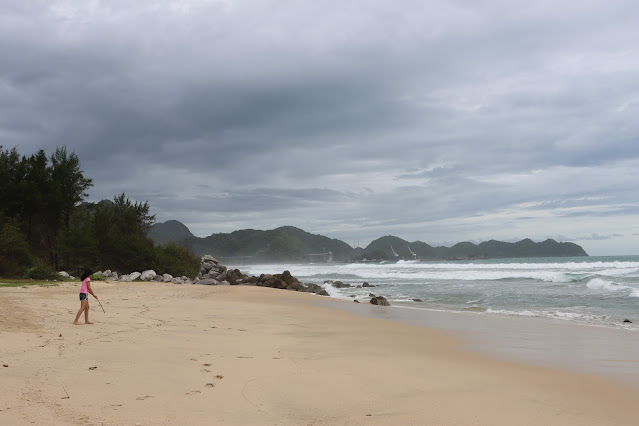































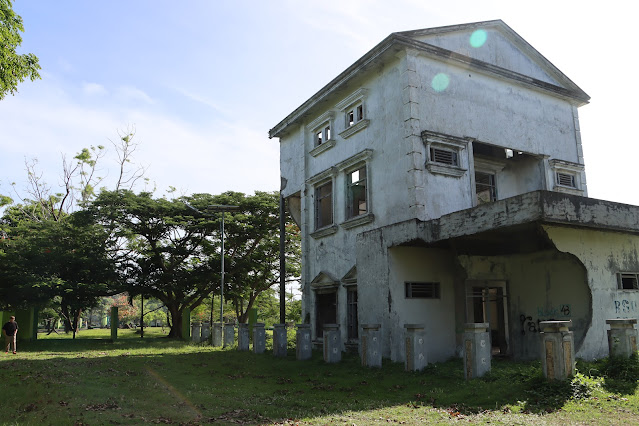





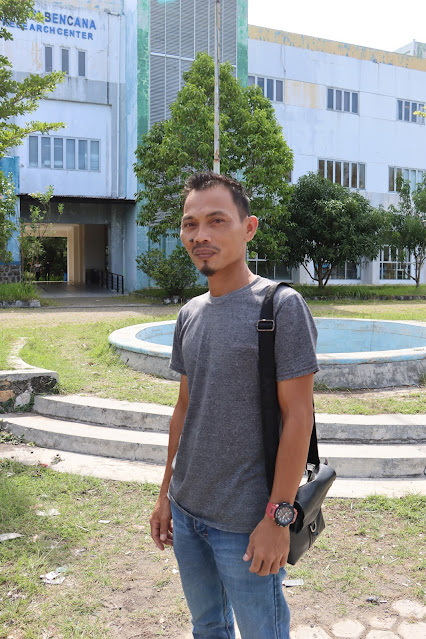


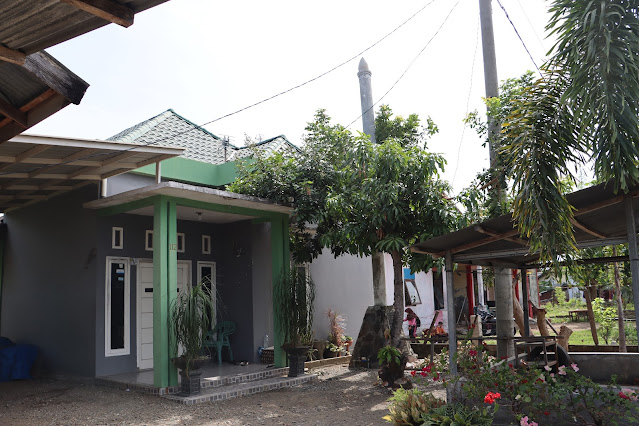

































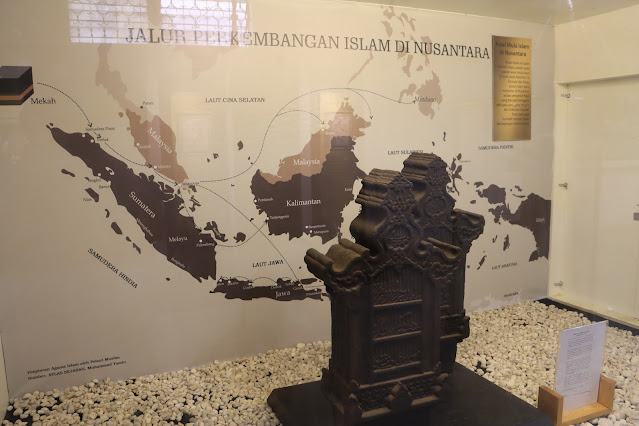













































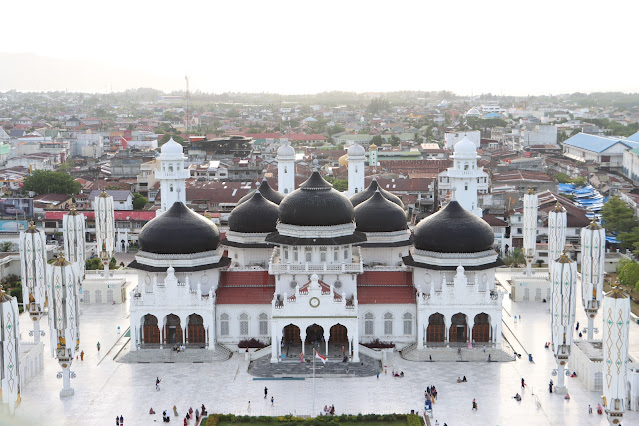







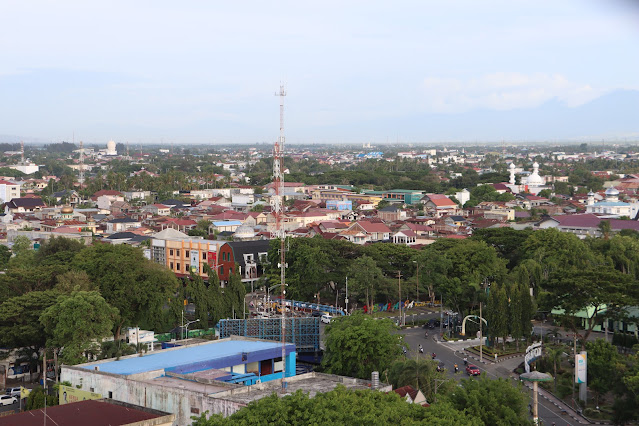
























No comments:
Post a Comment